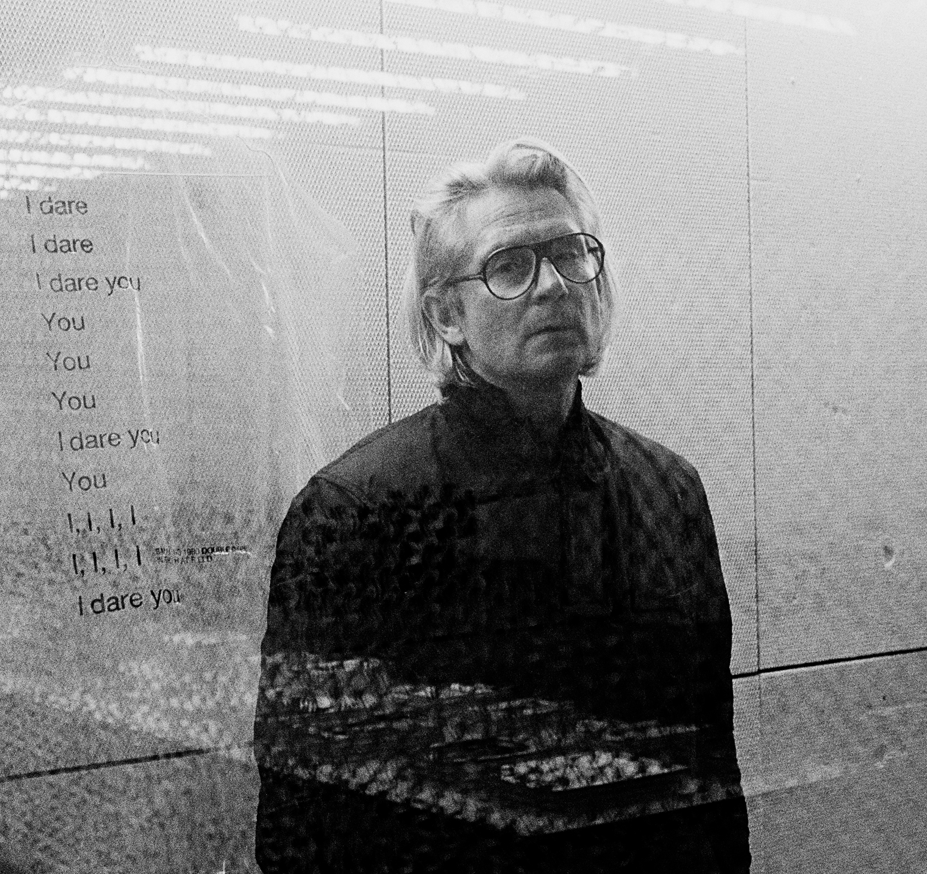
The popularity of Instagram shows: our world has become more visual. Brands therefore no longer only sell through emotions and experiences, but also via the perfect picture that is generated for the social networks. Mike Meiré knows this too, and he is well aware of the significance of instagrammable backdrops, but he is also of the opinion that the goal of good design is to create a cultural identity: relevance and awareness within a specific target group are not achieved alone through advertising but by creating experiences, providing a sense of purpose and conveying values. In this interview, the designer reveals what he thinks of instagrammability and how he would revolutionise the trade fair industry altogether.
“Relevance is gained through deeds, not through words.”
Mike Meiré, you started your “professional life” with a school newspaper created with your brother in your parent’s cellar. Since then, you have enjoyed a fantastic career, are now successful managing director of the agency Meiré und Meiré, owner of the fashion label (P)Leisure_Industries, have won countless prizes, are honorary member of the many creative clubs and thus a living design icon. What would you advise your younger you back in the 1980s today?
Don’t think about tomorrow, concentrate on the present and use every opportunity you get. Follow your instinct and develop a stance on the things that concern you.
As already mentioned, your design roots lie in printed matter and you were the editor and art director of many magazines, putting your hallmark on the appearance of ARCH+, Garage Magazine, brand eins or 032c, to name but a few. However, in recent years, the way we communicate has changed significantly and mainly happens digitally. What do you think we can still learn from magazines today?
A magazine reflects the attitude of an editorial team in the best possible way. It is about convictions, aesthetics and relevance – in a nutshell: it is about culture. From magazines, we learn how attitudes take shape and what it takes in order to develop the necessary sensitivity for relevance. Magazines can become the mouthpiece of a community, they can bring people together as “enablers”, they establish codes in everyday life and are an expression of expertise. A printed magazine can thus become a fetish, a timeless collector’s piece, and serve as a reminder for activities in the digital space. Digital is not per se of a better quality, it is merely another communication channel – but one which of course corresponds to the new demands of our increasingly digital communication behaviour: in the sense of the necessary updatability of information, transparency, speed and reachability, moving images and augmentation. But precisely through these technological catalysts, we recognise the special quality of reflection, of cherishing things, the need not to lose the overview – and that is exactly what makes a good magazine: its focus on a central topic which gives the reader the feeling that he has got to the heart of the topic. The physical limitation of the number of pages creates concentration, while in the Internet everything is constantly flowing.
You yourself move as a master of crossover between the disciplines and alternate continuously between the positions of brand and art director, of designer, of curator and artist. What role does art play in your work?
Art is produced by the uncompromising exploitation of one’s own resources. Art does not have to do anything and is thus without use or function. That helps me to centre myself but also to find my limits – depending on the group of works I am currently working on. For me it is about formal processes, shaped by control and a conscious loss of control. When I am alone in the atelier, I sense the freedom of thought that reminds me to apply this in the day-to-day work of the agency.
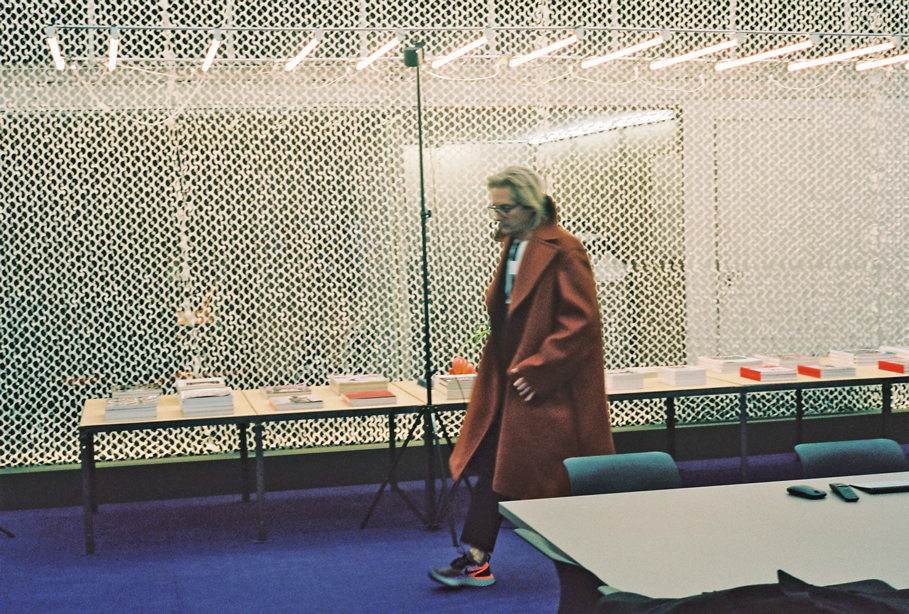
For some years, you have complemented your two-dimensional work with work in the three-dimensional space and have staged projects, which focus on the cultural links of brands in the context of art, architecture, fashion, music and design. What do you find so fascinating about creative spaces?
Through its physical presence, a space has a direct impact on people: it is real. In these times of increasing digitalisation and the longing for an immersive experience, this has a new quality of experience. People want to be touched, this can be done with stories and the way they are staged. Different design disciplines flow into one another in the process, enabling a heightened intensity.
In brand communication, you often talk about “brand coding” – what do you mean by that?
This is about relevance and cannot be directly communicated. I can’t say: “I am relevant.“ – I have to do something, which triggers a sense of relevance in others. And codes are in turn the attractors of expertise. These days, more than ever brands need a pronounced sense for cultural codes in order to be able to collaborate with the right companions. Relevance, significance, the ability to lead, thought leadership, … – all that is a result of culture, not of marketing. Relevance is gained through deeds, not through words.
Currently, the social media are influenced by imagery – above all Instagram – our feeling for aesthetics and thus also the design of our spaces. What do you think of this development?
Through the constant use of social media, the user learns intuitively what he likes and what not. He is empowered and responsible. Alongside the risk of latent dependency, he also develops a sense for staging. And let’s not fool ourselves: We are moving towards a time of total capitalisation. Sooner or later everything will become a market with cutthroat competition and then the laws of disruption take effect again. The currency of this development is attention – and how this can be created, can be learnt in our day-to-day dealings with social media. In the process, the behavioural patterns of staging and its aesthetic codes are increasingly converging. Everyone wants to demonstrate their individuality and yet they follow the tried and tested codes. Quite simply, everything is getting more and more alike.
Does this mean that architecture has been largely “demoted” to being “merely” a backdrop for a successful selfie?
Architecture serves to stage a certain clientele – but isn’t that what it always did? Architecture is always an expression of power, personal aspirations and creative will. But these days architecture in the urban context is also increasingly branded: façades with ever-new textures, buildings with the most incredible shapes, the perfect brand temple and thus also the perfect projection space for a hedonistic self-presentation. But that doesn’t mean that architecture has been demoted. On the contrary: this is what makes progressive architecture into a stage.
Instagrammability has long since arrived in retail, even in the museum, only the trade fair industry seems to be dragging its feet a bit – or have you also been able to observe this trend here too?
The brands which have undergone the cultural transformation and recognise that Generation Z is slowly becoming an economic factor to reckon with are currently changing their trade fair strategies quite dramatically: new festival formats are appearing, tutorials in the form of TED talks or podcasts and spaces for immersive experiences – themed areas in which visitors can submerse themselves and share their experiences in real time with their community. Every customer journey is checked for instagrammability. It took a while, but the traditional trade fair formats are definitely old hat. Young people have acquired the urgent need, precisely through their digital socialisation, to meet physically and to document what they experience there on social media.
What do you think is the advantage of sharing staged brand worlds in the social networks?
The advantage for the brands lies in the confirmation of their own activities within the targeted community. When things are posted and comments appear, the brand becomes a topic of public conversation. And today’s markets are conversations! It is thus all about interaction with the public. The advantage for consumers, on the other hand, lies in finding out what “their” community is saying about the brand. The individual is namely guided by what his community thinks. He is trying to make sense of things, the community helps him by evaluating the brand and its products or services.
Don’t you see a risk here that in the end it is no longer about conveying values and messages but “just” about how many clicks or shares in the social media channels something gets? Or is that the new currency?
Attention is the new currency and this is manifested in clicks. But that does not mean that it is no longer about values and messages; these just need to be staged and communicated quicker, more emotionally and more directly. Globalisation, generation change and digitalisation are taking their toll. The moaners are wasting valuable time and will end up down Nostalgia Street.
How will the trend develop? What comes next?
It is going to be hard: digitalisation is pinpointing the weak spots of every enterprise. There is no thereafter, either you are in or not. Speed in anticipating, thinking, acting and collaborating, rethinking, thinking afresh, letting go, daring, staying cool, … We will experience a culture of the many and of the few.
If you think back to your last tour of a trade fair: did you feel inspired? What would currently surprise or impress you?
Somehow everyone is doing everything and doing everything the same. In a sea of globally oriented, strategic excellence I am only really still interested in disruption, authenticity and originality.
With the booth for NEW TENDENCY you yourself explored new avenues in trade fair design: The architecture becomes an interface and “merely” serves as basis for augmented reality. What qualities do you still see in real brand presentations?
The real brand presentation allows people to make physical contact. This is always more intensive that an online visit and also creates a personal relationship. It is not about “either – or”, but about “one and the other”. We must accept that alongside the traditional analogue qualities we have to cultivate additional new, digital qualities. Our lives will become more complex. We have to face up to that.
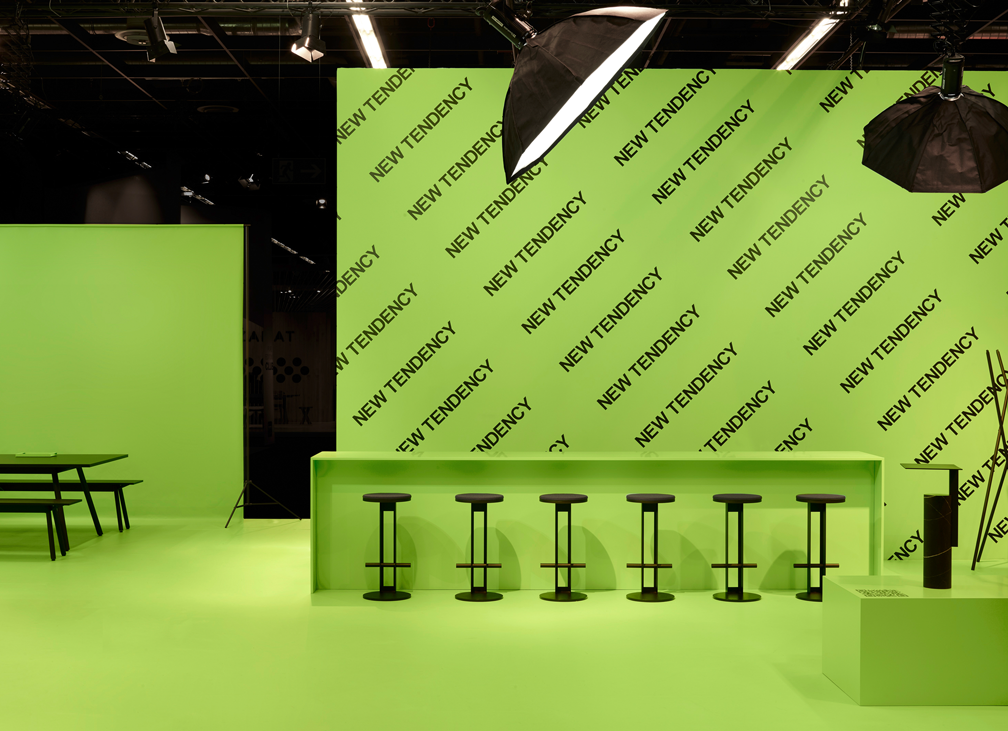
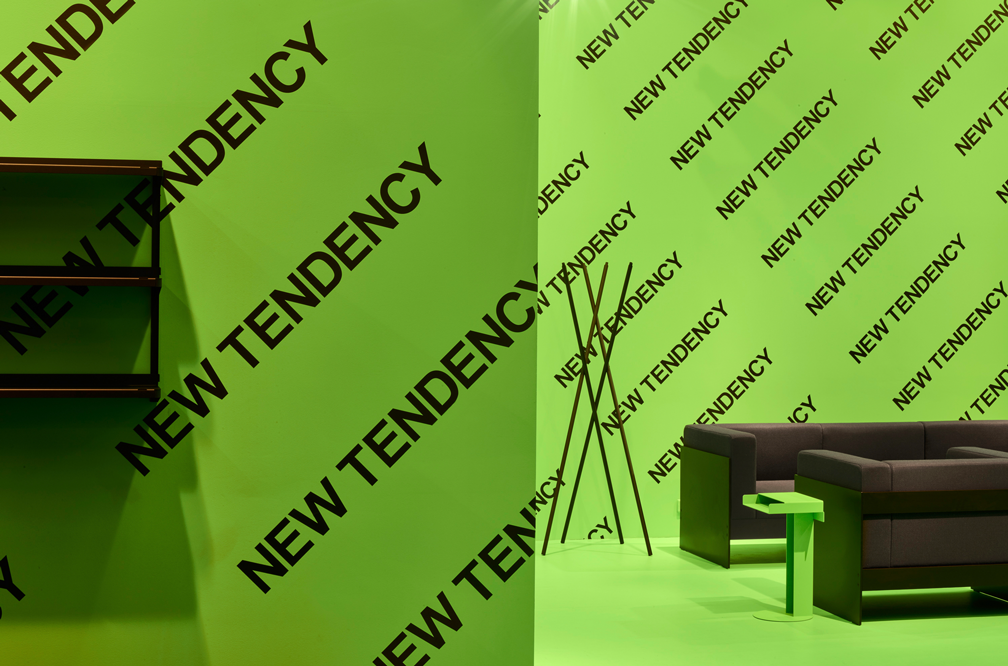
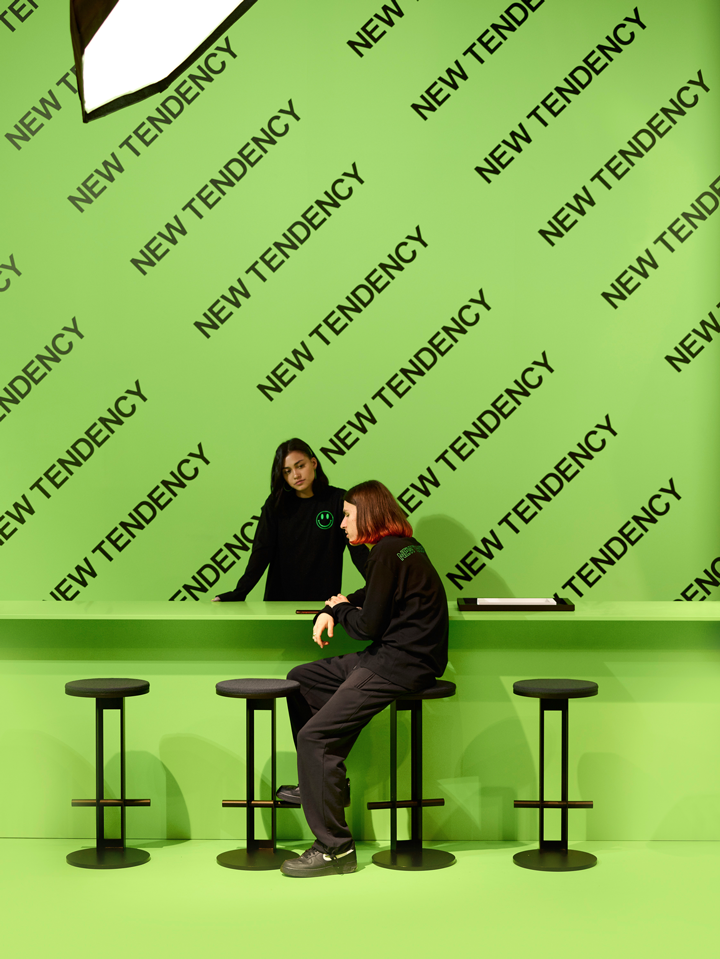
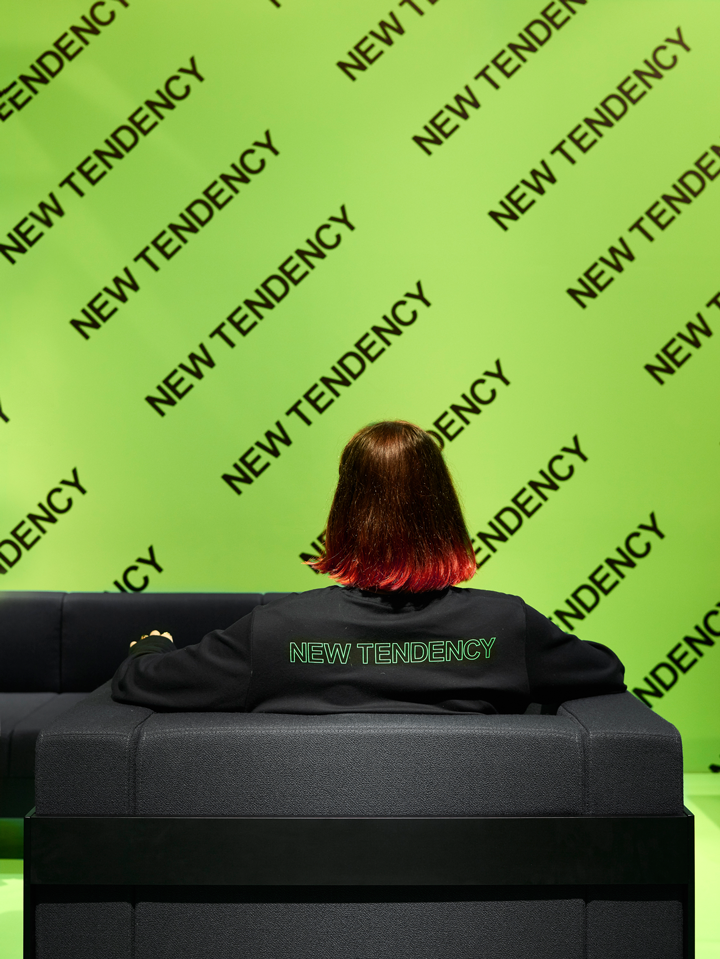

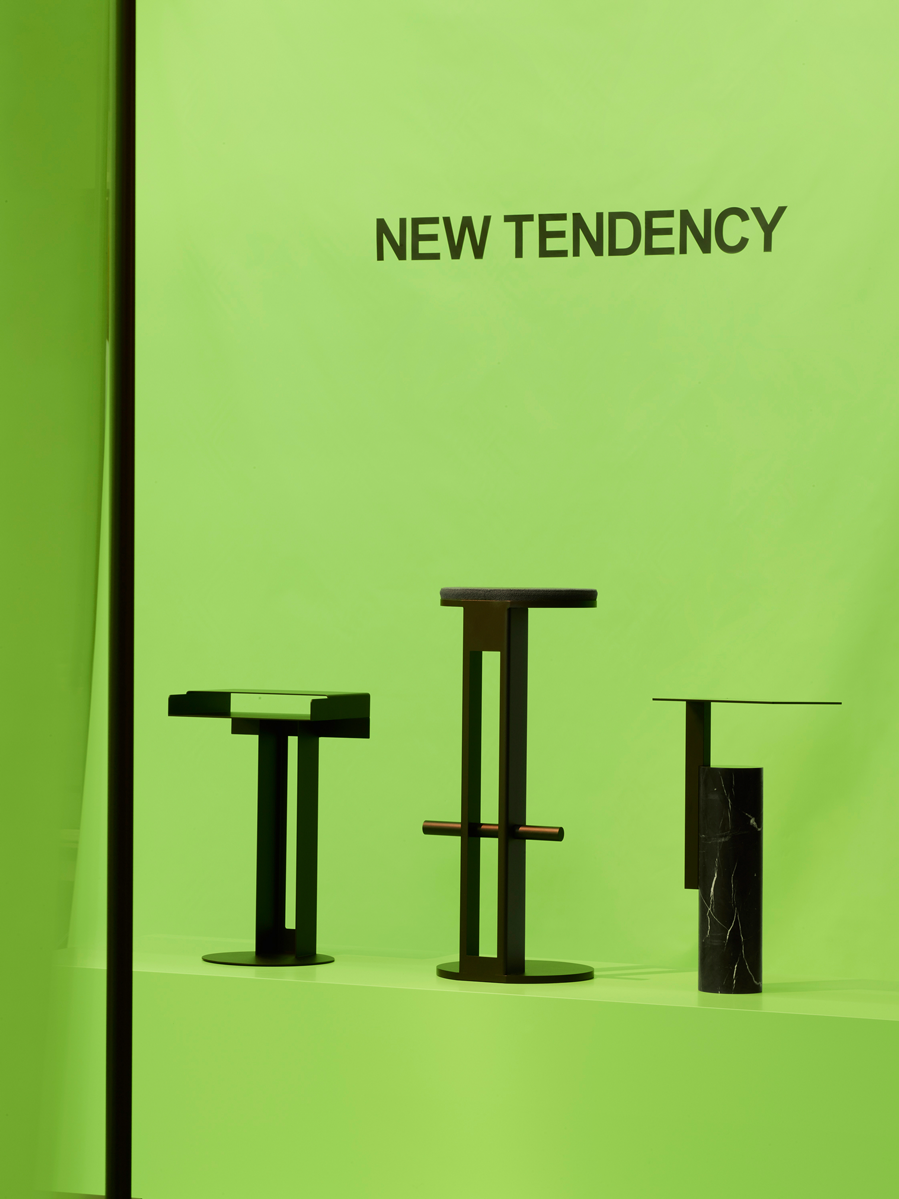
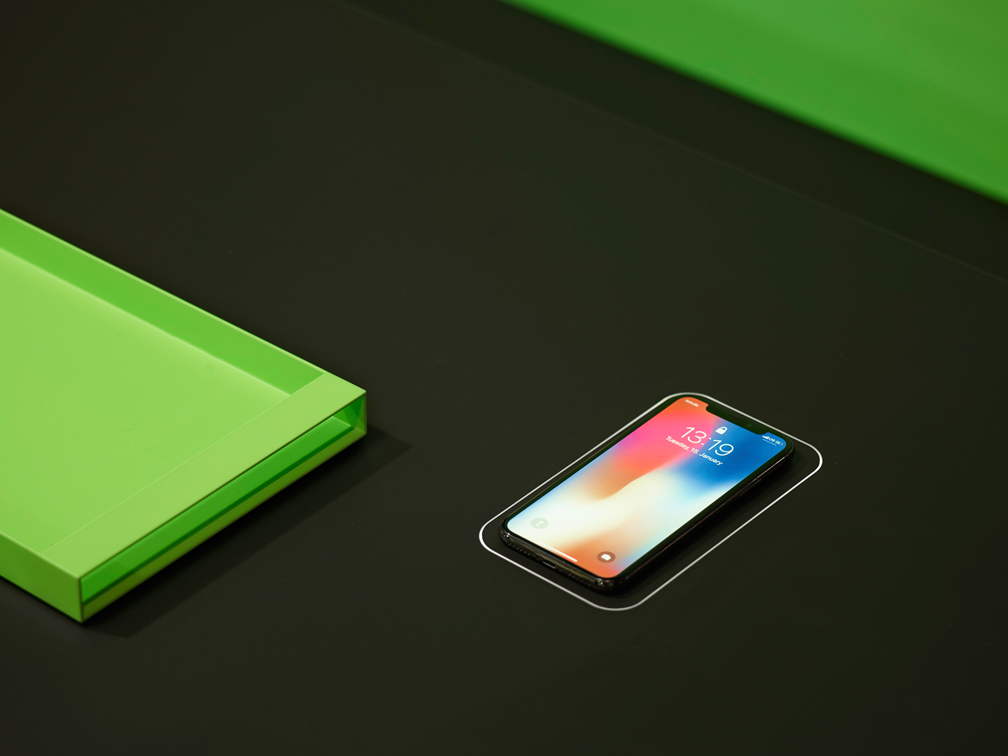
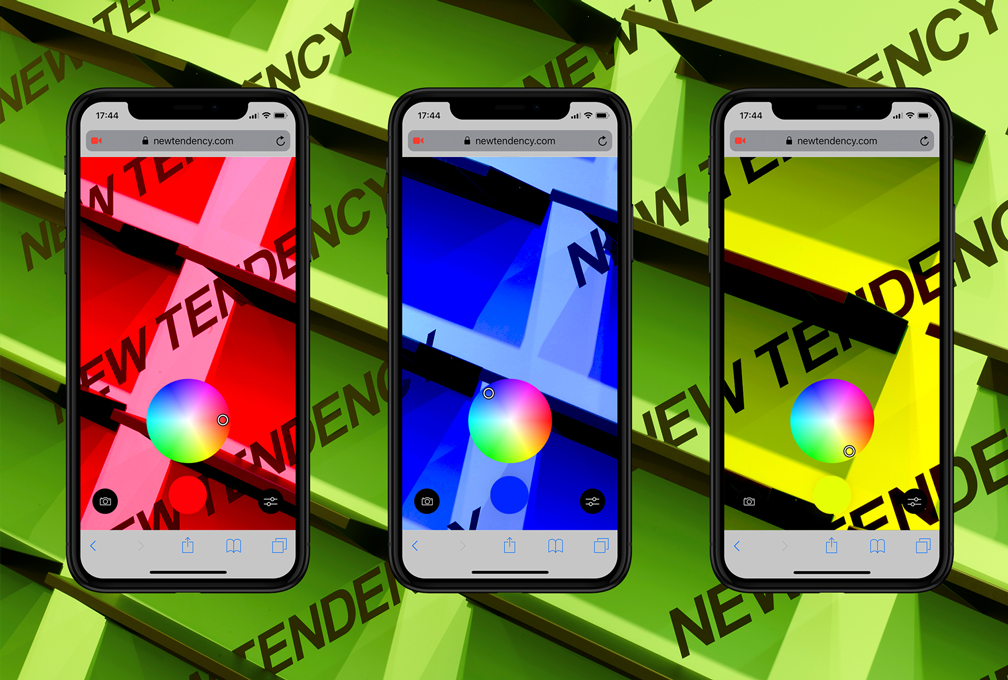

How would you revolutionise the trade fair industry per se?
It needs to stop defining itself as the trade fair industry. Those are out-dated formats. We need hybrid forms of collaboration. A new understanding for supply and demand needs to be developed. I believe that very few actually have any idea who their public is.
To wrap up, the crucial question, now you can save the world: How can designers in these times of climate change, political and social upheaval make a social contribution that goes far beyond the “pretty picture” on Instagram? What should design have has its goal?
The goal of good design always was and still is to draw a “pretty picture” – only “pretty” no longer has anything to do with what has gone before.
And as regards your own design position: what is especially relevant for you today and in future?
Independence.
Mike Meiré, many thanks for talking to us!
ABOUT MIKE MEIRÉ
Mike Meiré, born 1964, is designer, art director, artist and curator and started his career as editor of the magazine Apart. In 1987, he founded the agency Meiré und Meiréwith his brother Marc and in 2001 the culture production NEO NOTO. As art director, he shapes the style of many contemporary magazines to this day and with his interdisciplinary team also realises cross-media strategies and projects: from Corporate Identities, architecture and interactive exhibits for trade fairs and retail via international exhibitions and cultural projects through to AR-based customer journeys as well as communication, PR and social media concepts. His work as an independent artist centres on the interplay between elements of high and everyday culture; since 2010 he has been represented by Galerie Bartha Contemporary in London. On Instagram he himself has almost 9,000 subscribers.